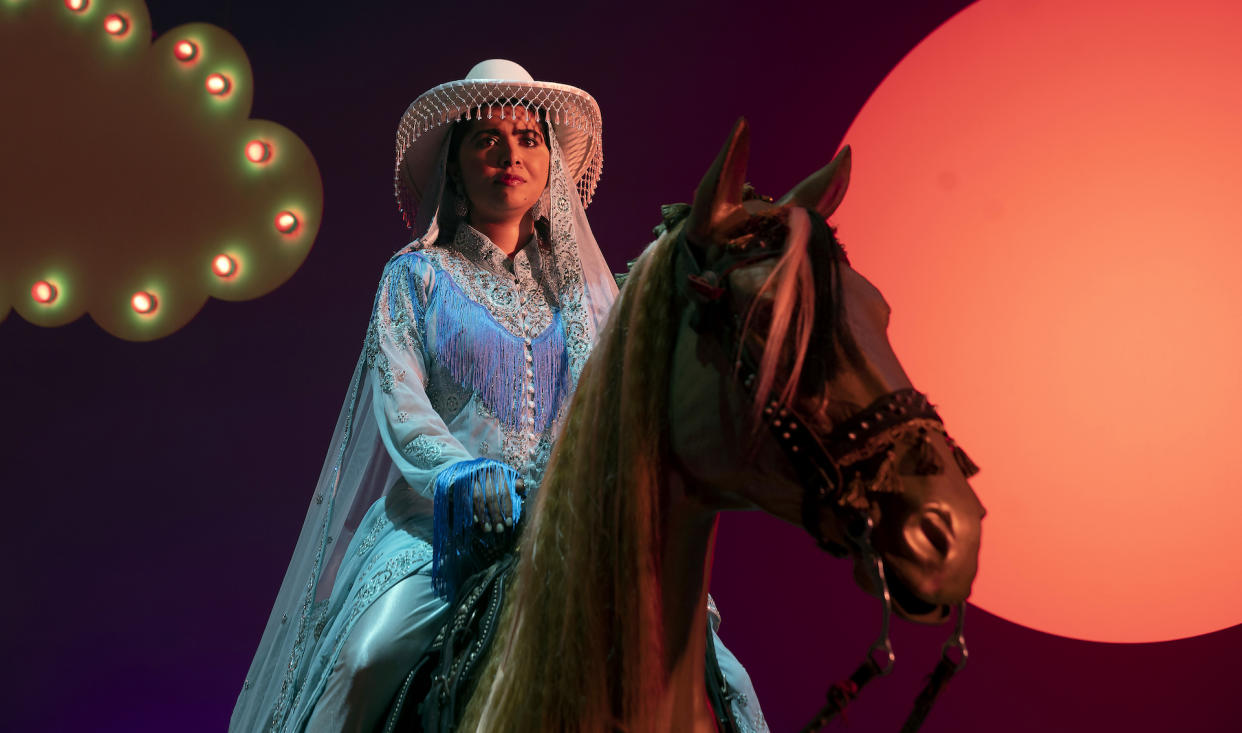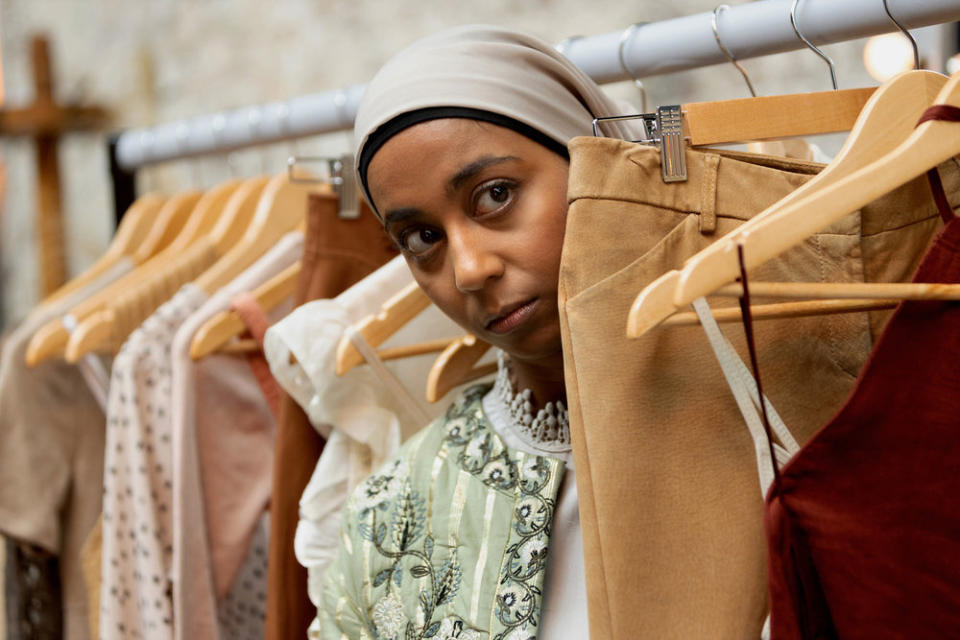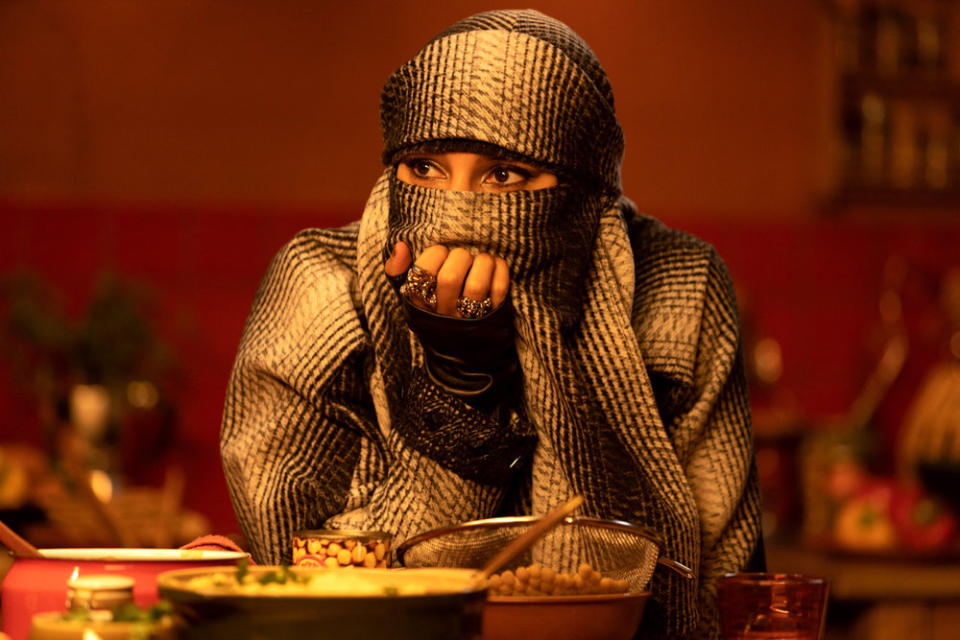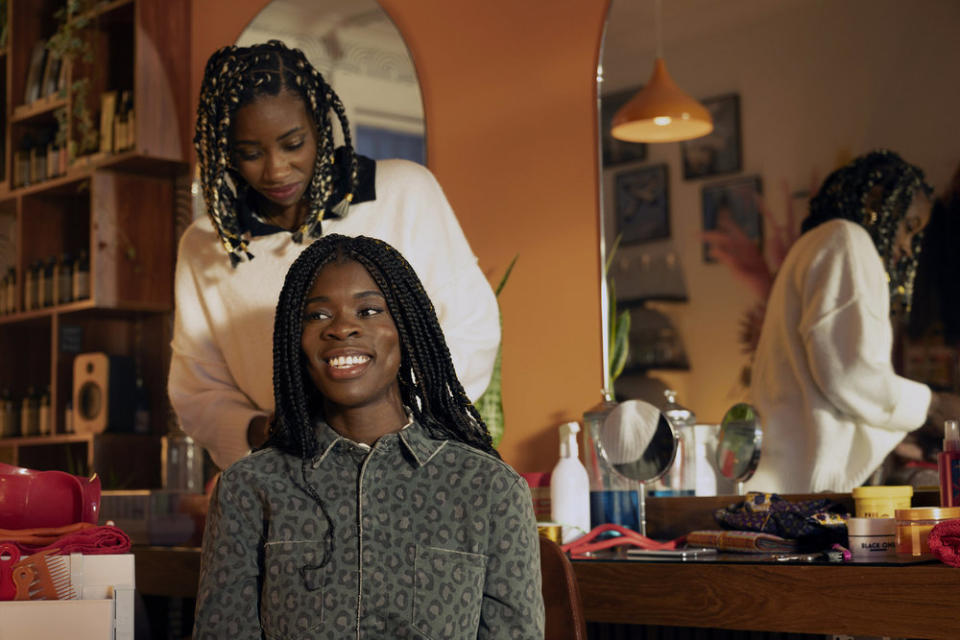The Looks on ‘We Are Lady Parts’ Are So Good That They Made Malala Do It

Makeup design doesn’t always mean prosthetics or extremes — that’s why the Emmy Awards smartly single out contemporary makeup design as its own category. But too often, those more immediately arresting designs are the ones that get all the attention. Not anymore. Join IndieWire in celebrating the makeup artists creating subtle, character-specific work for contemporary shows.
The sheer amount of character-focused storytelling “We Are Lady Parts” does in its second season — and the speed at which the show does it — feels like a punk song. Amina (Anjana Vasan), Saira (Sarah Kameela Impey), Bisma (Faith Omole), Aisha (Juliette Motamed), and Momtaz (Lucie Shorthouse) all enter their “villain era” in Season 2, dealing with the tradeoffs of commercial success versus community-building, intersectional expression of identity, a love triangle, and upstart rivals doing sad girl covers of their punk bangers. And it all happens over six 25-ish-minute episodes.
More from IndieWire
As such, every facet of what we see onscreen needs to help us understand who the characters see themselves as and also illustrate the conflicts they’re working through. A metaphor about the filmmaking departments and how they all needed to play off of each other easily presents itself here; suffice to say, the work by hair and makeup department head Cynthia De La Rosa provides a baseline for the characters’ sense of self.
But just as each member of Lady Parts has their own identity, De La Rosa adapted her approach for each member of the band, their friends, enemies, and idols — the latter including the actual Malala Yousafzai, who series creator Nida Manzoor convinced to play a Western hero version of herself in one riotously funny musical number.
“She was incredible and allowed us to do whatever we wanted with her makeup. I wanted her to feel very romantic — and also our art director did neon lights to make everything feel heightened. So we did oranges and pinks on her face,” De La Rosa told IndieWire. “The makeup is also ‘70s inspired; everyone has very ‘70s colors in their makeup palettes to give that kind of lilt.”
It’s one of the gifts of “We Are Lady Parts” that it plays with such fantastic musical realities, genre mashups, and the kind of whip-smart editing that would make even Scott Pilgrim say, “Whoa.” To pull all that off, though, the makeup either needs to be visually upping the ante, whether that’s leaning into the more heightened visual gags or pulling back and accentuating the core idea or emotion a character’s struggling with. De La Rosa approached each character a little bit differently, based on their arc over Season 2.

Amina, full of villain-era confidence, is the character who perhaps most fully gets to own a genre for herself. She launches herself into her own romantic comedy and is given the makeup to match. The comedy, of course, is that Amina’s version of a romantic leading look really wasn’t a big makeup lift at all. She’s such a good girl that all it takes is a little lip gloss to send her down her own version of “Rye Lane.”
“We [used] this really beautiful Lisa Eldridge pink with a Fenty gloss over the top, and I pushed more of a gel blush on her. You can notice there’s more of a pink on her cheek and that she’s more flushed, but I kept everything really natural with her,” De La Rosa told IndieWire.
With band manager Momtaz, De La Rosa also needed to do a lot with a little. Momtaz’s nikab accentuates all the emotion Lucy Shorthouse is conveying through her eyes in her performance, and so her eye makeup can really change the arena she’s playing in. While a great smokey eye helps her feel the most punk out of all Lady Parts, De La Rosa decided to pull her eyeliner out and play more with whites and silvers.
“We were playing with colors that were playing against her costume,” De La Rosa said. “Then at the end, when she’s in her power as a music producer, we see her have more color in her eyes. We see a bit more of the reds and pinks and blues and a bit more shine in her makeup. And Lucy’s such a wonderful actress and we get so much emotion from her just from that.”

De La Rosa also wanted to subtly accentuate Saira’s established look, but in contrast to the environments around her, rather than playing into them. She redesigned and reprinted all 35 of Saira’s tattoos and tweaked the color slightly so that she’s got even that much more edge and feels grungier inside of the color choices made by costume designer PC Williams and production designer Amy Maguire.
For Aisha, as well, De La Rosa mirrors the tug of war within her about how open to be regarding her relationship with Laura (Anna Torv). She alternates between a quite stylish ‘90s-esque lip and more of a ‘20s approach. “We blended the shades out and blended the eye out so that it felt more like that kind of silent film or film noir makeup,” De La Rosa said. In both modes, Aisha has her typical strong eyeliner, but there’s a sense of experimentation to her in Season 2 and it’s reflected, however subtly, in how she presents herself.
Contrast between how characters look also helps reinforce what’s between them. For Bisma, De La Rosa wanted to bring out an earthy color palette, with lots of subtle oranges and green accents making her look extremely grounded, even as she struggles with all of the roles that she juggles — mother and punk band member — and which parts of her identity she needs to express, especially in front of her daughter Imani (Edesiri Okepherho).

“There’s such an evolution [with Bisma] because her daughter is going through an evolution. Imani’s character is this wonderful foil to her mother, and we did lots of neon eyeshadows and really strict black lines, and we played with blue and green mascaras, a very ‘90s lip based on those dark brown lip-liners,” De La Rosa said. “We see in that household there’s a great generational look at how they approach themselves.”
How momish Bisma looks, and whether or not there are times that she might want to wear her hair uncovered, are a huge part of that story. When the hair and makeup gently push her more towards one identity or another, we feel it. “Bisma’s story was so beautiful. Actually, her story, especially in Episode 4, is the reason that I did the series,” De La Rosa said. “One of the magical things that happens in ‘Lady Parts’ is the acknowledgment of cultural differences and the way that people present aesthetically in that way. Telling that hair story for her character is such an important thing.”
Telling each member of Lady Parts stories allows for many ways for viewers to see themselves, particularly if they don’t often see themselves reflected in the TV they watch. De La Rosa likened designing all the different looks for each member of the band as a real “By Your Powers Combined” puzzle that it was her delight to solve. “It’s all elemental. They complement each other in such a beautiful way,” De La Rosa said.
Best of IndieWire
Sign up for Indiewire's Newsletter. For the latest news, follow us on Facebook, Twitter, and Instagram.
Solve the daily Crossword

